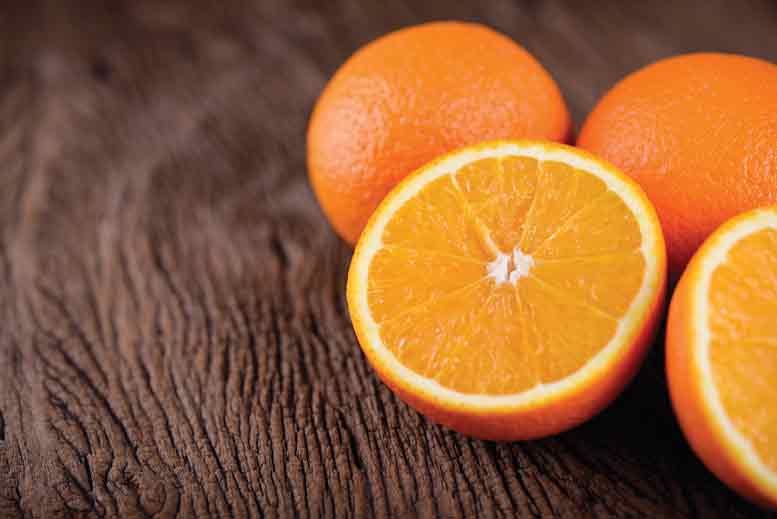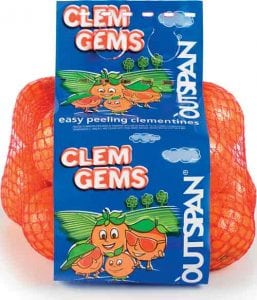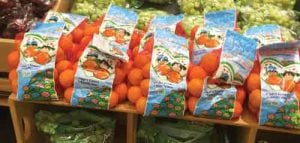Bright Skies Ahead For SOUTH AFRICAN CITRUS
May 1, 2018 | 7 min to read
Despite weather challenges, summer citrus from South Africa is set for strong sales in the U.S. market. Retail professionals like Keith Cox and Richard Stiles emphasize that summer citrus is a consumer expectation, contributing to impulse buys. The imported citrus category has quadrupled over 11 years, with consistent quality and sizing driving demand. Although a drought may delay South African Navel oranges and Mandarins, strong promotional efforts and attractive displays will enhance sales potential during the summer months.

Originally printed in the May 2018 issue of Produce Business.
Despite weather concerns, summer fruit still expected to make a big sales splash.
Citrus from South Africa remains a vital product for retail during U.S. summer months and this year should be no exception.
“Summertime citrus has become a must have for produce departments today,” says Keith Cox, produce category manager at K-VA-T Food Stores in Abingdon, VA, with 130 stores. “Today’s consumers do not recognize the change in growing regions as they did in the past, since there are little to no gaps in product availability. This, in turn, creates impulse buys and adds sales and profit dollars to the produce department.”
Richard Stiles, director of produce and floral for Redner’s Markets in Reading, PA, with 44 stores, agrees summer citrus is an essential. “Customers at this point expect to find South Africa citrus in the stores in summer because it’s proven itself with quality and variety,” he says. “If you don’t have it, you’ll have some upset customers.”
The imported citrus category in the United States has grown more than four times over the past 11 years, according to Suhanra Conradie, chief executive of Summer Citrus from South Africa in Citrusdal, South Africa. “This has made it possible for U.S. retailers to have the best summer citrus on their shelves at a time when the United States is not producing citrus.”
After 18 years of experience, South Africa is now a skilled purveyor for U.S. stores. “South African citrus provides consistent sizing and quality that retailers need,” says Mayda Sotomayor, chief executive of Seald Sweet in Vero Beach, FL. “Exporters have a good handle on what they are shipping and when, so it makes planning for ads and weekly volumes smoother.”
South Africa mainly exports Navel oranges, Mandarin varieties and grapefruit to the U.S. market. “Overall growth is projected for mostly Navels and easy peelers (Mandarin varieties),” says Conradie. “It would be fair to say volumes will grow in 2018 by six to eight percent, which we’re very pleased with. In general, the imported easy peeler category has shown the biggest growth over the past 11 years — almost seven times — and oranges have grown by three times. This tells us consumer demand is up, and we encourage retailers to lean into this by emphasizing product displays and front-of-produce positioning.”
TIMING IS EVERYTHING
 Although South African citrus producing regions have experienced drought, marketers expect little effect on the upcoming season for shipping to the United States. “There has been a persistent drought in the Western Cape of South Africa where U.S.-bound citrus is grown,” says Mark Greenberg, president and chief executive of Capespan North America in Montreal. “But growers are managing tight water supplies well, and the drought should have limited impact on fruit this season.”
Although South African citrus producing regions have experienced drought, marketers expect little effect on the upcoming season for shipping to the United States. “There has been a persistent drought in the Western Cape of South Africa where U.S.-bound citrus is grown,” says Mark Greenberg, president and chief executive of Capespan North America in Montreal. “But growers are managing tight water supplies well, and the drought should have limited impact on fruit this season.”
Gray Vinson, commodity manager for South African citrus at Seald Sweet, agrees retail can look forward to a successful season, even if timing may be a little off. “The South African Navel season will be delayed by about two weeks this year,” he says. “We expect to see limited volume by the third week of June. Promotable volume will begin the third week of July, and retail will be able to run promotions all through August. South Africa’s Clementines will be about two to three weeks delayed, with limited volume arriving the first week of June. Promotable volume will be in early July, so a good time to start promoting will be around mid-July.”
South African Navel oranges will be available from mid-June through September, with best availability from mid-July through Labor Day, concurs Greenberg. “They will be followed in September through October by Midknights,” he says. “Soft citrus (Clementines and Mandarins) will be available through September. Star Ruby grapefruit will be available from mid-June through August. Cara Cara oranges will be available in very light volume in July.”
The expected early termination of the California season also will be a factor. “California is ending early on both Navels and Clementines, so retailers may want them earlier than South Africa can physically get them here,” says Vinson. “Retail will need to look at other options until South Africa has promotable volume in the market, which may not be until the end of July on navels.”
Greenberg explains the early finish by California, though causing a gap in the market, should create excitement for South African arrivals. “The expectation that California Navel orange availability will not continue beyond mid-June suggests the earliest South African Navel oranges will enjoy a hot market,” he says.
Stiles notes the expected gap between the California and South Africa season may result in some lost sales but hopes the additional demand, once product is in the market, can make up for it. “Once we do get the product in, we expect customers will be eager for it and we can generate extra sales,” he says.
Staying in touch with suppliers during this period is crucial, notes Stiles. “We’re dealing with Mother Nature, and it’s difficult to plan ads with weather issues,” he says. “You must have good information from the growers and marketers. You must run sales when they have volume, and that can change year-to-year and even month-to-month.”
“The expectation that California Navel orange availability will not continue beyond mid-June suggests the earliest South African Navel oranges will enjoy a hot market.”
— Mark Greenberg, Capespan North America
STEADY ORANGE DEMAND
 South Africa’s foundational citrus item remains the Navel orange. “Navel orange volumes have not really changed over the past 10 years, with South Africa loading between 1.7 million to 2 million (15 kg) cases each season, market conditions and farm yields depending,” says Capespan’s Greenberg.
South Africa’s foundational citrus item remains the Navel orange. “Navel orange volumes have not really changed over the past 10 years, with South Africa loading between 1.7 million to 2 million (15 kg) cases each season, market conditions and farm yields depending,” says Capespan’s Greenberg.
Navels in summer continue to experience steady demand. “Consumers who purchase Navels on a weekly basis will continue to purchase when retailers have made the switch to imported citrus,” says K-VA-T’s Cox. “The eating quality is very similar to domestic product.”
Greenberg explains South African Navel oranges land principally on the East Coast, along with light volume landing in Houston. “On the East Coast market, South African Navel oranges compete with Chilean Navel oranges,” he says. “It is fair to say Navel orange volumes in the U.S. market are relatively stable. This year’s South Africa industry volume to the United States will be in the range of 1.9 million cases of Navel oranges and a further 500,000 cases of Midknights, a late-season seedless Valencia-type orange exhibiting excellent visual appeal and taste.”
Seald Sweet’s Vinson forecasts a good mix of sizing on Navels especially. “Although there will be smaller fruit, we’ll have access to larger sizes too,” he says. “There will be a good opportunity to promote bags and bulk.”
Sotomayor encourages stores to promote bagged product as well as other Navel varieties. “At Seald Sweet, we have seen growth in bagged Navel demand,” she says. “The 3-pound and 5-pound high-graphic bags have increased year over year. Cara Cara’s have become quite a hit. Consumers appreciate the vibrant internal color and taste.”
Emphasize Mandarins, Grapefruit
A little extra emphasis on Mandarins and grapefruit can yield big results in summer. “The industry has observed clear growth in the consumption and production of Mandarin varieties,” says Capespan’s Greenberg. “Easy peeler (Clementine and Mandarin) consumption is relatively stable through the summer and is less impacted by the vacation period or by the availability of soft summer fruits.”
Cox references growing popularity of Mandarins in K-VA-T’s stores. “It is extremely important to continue promoting these citrus varieties due to the volume and sales they produce,” he says.
Seald Sweet reports double-digit growth year after year in Mandarin varieties. “Just when we think we have seen the top of the demand, it continues to surprise us,” says Sotomayor. “This growth is due to good quality and maintaining a good rotation of the product. Production is keeping up with the demand as young groves start to produce.”
Grapefruit presents an additional opportunity for summer sales. “Grapefruit is a staple item for us,” says Redner’s Stiles. “We offer a few different sizes for customers. While we saw a dip in sales a few years ago, demand is building back up again.”
Capespan North America is the leader in sales of South African Star Ruby grapefruit in the United States during the summer. “We will have product from mid-June through mid-September, which is right on time, and we expect a good market this season,” says Greenberg. “We have been steadily building this program over the past few years and it has been very successful with those retailers who feature what is generally accepted as the best-eating grapefruit in the U.S. market in the summer months. Demand has been growing steadily.”
REACHING CUSTOMERS
 Summer citrus can be an easy sell simply by utilizing visible displays and supplier support. Redner’s Stiles points out the importance of displaying fruit front and center. “As customers walk in the front door, you want them to see it,” he says. “A nice, visible display will always increase sales.”
Summer citrus can be an easy sell simply by utilizing visible displays and supplier support. Redner’s Stiles points out the importance of displaying fruit front and center. “As customers walk in the front door, you want them to see it,” he says. “A nice, visible display will always increase sales.”
Marketers urge retailers to work with them and take advantage of marketing support. Sotomayor recommends using POP material, social media promotions and promotional support in ad dollars from the Summer Citrus from Africa program and advocates demos at point of purchase. “When the consumer tastes the internal quality of the fruit, it sells itself,” she says.
Stiles agrees sampling is key. “South Africa citrus has good flavor and will be popular when customers taste it,” he says.
Capespan North America works with retail partners and commits marketing funds for targeted promotional activity, including in-store demos. “The most important things a retailer/buyer can do to increase citrus sales from South Africa are promote, promote, promote,” says Greenberg.
Summer Citrus from South Africa will release a bi-weekly trade newsletter to update retailers on exactly what is going on in the production area and what can be expected throughout the season. “We will also be launching a consumer promotion that specifically encourages families to learn more about South African citrus and ways to create simple and great tasting snacks during the summer months,” says Conradie.
10 of 18 article in Produce Business May 2018

